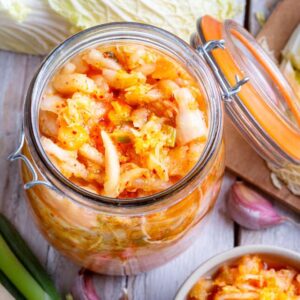
6 Secret Ways to Spot HIDDEN Processed Foods
“Avoid eating processed foods,”—If I’ve said it once, I’ve said it a thousand times.
The reason why is simple. These Frankenfoods are designed to satisfy your taste buds. But they leave your body full of foreign chemicals that can cause harm and in need of more nutrients.
But a patient asked me the other day, “How do I know if it’s processed?”
It’s an excellent question. And I have the answer…
The truth is, when you go grocery shopping, you should look for minimally processed foods instead of unprocessed ones.
Because the moment a food is cut, cleaned, and prepared for consumer use, it’s technically minimally processed. These foods are generally easy to spot, such as fruits, vegetables, and eggs, along with some meat and dairy products.
However, I’ll admit it’s not always obvious which foods have been highly manipluated. That’s when these six secret ways to spot processed foods come in handy…
- Long ingredient lists: The more ingredients a food item contains, the more likely it is to be heavily processed. Look for foods with shorter, uncomplicated ingredient lists.
- Ingredients you can’t pronounce: Chemical-sounding ingredients like maltodextrin, sodium nitrate, carrageenan, and others signal that food scientists have formulated the food with less than natural ingredients. Stick to products with everyday, natural ingredients.
- Health claims on the packaging: When food products make flashy claims about health benefits or added nutrients, it’s often to distract from the fact that they’re actually highly processed. Whole foods that are naturally healthy typically don’t use this kind of advertising.
- More sugar than you’d expect: Added sugars are snuck into processed foods to make them taste better. Check the sugar content, and if it looks like more than what you’d expect to see in a natural food, be wary.
- Shelf stability: Food that seems like it never goes bad has likely been processed to resist spoilage. Preservatives and processing techniques can allow some products to last for months or even years. In general, the less processed a food is, the shorter its shelf life.
- Hyper-palatability: Food scientists literally design junk foods to taste as delicious as possible. This is known in the industry as “the bliss point,” and the goal is to make them taste almost addictive. The flavors, mouthfeel, and textures have been carefully engineered to overstimulate your senses. Whole foods nourish, while processed foods simply thrill your taste buds.
Keep an eye out for these processed foods’ red flags. They can help you make better, healthier choices when you go grocery shopping.
P.S. Dodge the damage caused by junk foods with THIS simple but powerful nutrient hack.
Written By Dr. Scott Olson, ND
Nearly 25 years ago, failed mainstream medical treatments left Dr. Olson in constant pain – and his health in ruins. And that’s when he did something REVOLUTIONARY. He began his career in medicine – and dedicated his life to uncovering the true, underlying causes of disease.
Through his innovative medical practices in Tennessee and Colorado, Dr. Olson has helped cure countless seniors from across America of arthritis… heart disease… diabetes… and even cancer. All without risky prescription drugs or painful surgeries.
View More Free Articles
Stop Obsessing Over Diet Trends
Can we stop with the endless diet debates already? Every other week there’s a new headline shouting about which diet is best for weight loss, heart health, or diabetes. Paleo, keto, low-carb, high-protein… it’s exhausting. And now, a new meta-analysis is out comparing the Mediterranean diet, the DASH diet, and something called AHEI (that’s “Alternative...
A New Reason to Ditch Processed Junk
If you’ve ever walked the inside aisles of your local grocery store and thought, “This is all just junk,” your instincts were spot on. A new study published in the journal Thorax just added another red flag to the list of dangers linked to ultra-processed food—a 41 percent higher risk of lung cancer. That’s right....
When Being Winded on Stairs Is Serious (And When It Isn’t)
I had an athlete visit me recently because he experienced shortness of breath while climbing stairs. He is in great shape, so he was worried about what it might mean. “Doc,” he said, “I run five miles three times a week. Why am I huffing and puffing after two flights of stairs?” His concern is...
Study EXPOSES Hidden Danger Lurking in Your Car
We think of our homes and cars as safe havens. But according to a startling new study, they may be flooding your lungs with microscopic plastic particles—every single day. Researchers in France recently found that adults inhale an average of 68,000 microplastic particles daily from indoor air alone. To put that in perspective, that’s about...
Mailbag: Is Modern Food Making You Snore?
“What can cause snoring, and is there a way to correct this issue?” —Seeking Silence Hi Seeking, Snoring happens when the soft tissues in your throat relax and vibrate as air passes through during sleep. While several factors can cause snoring—from sleep position to nasal congestion—I want to share one trigger that might surprise you....
Simple Food Swap SLASHES Dementia Risk 28%
Let’s be honest… who would jump at the chance to cut their dementia risk by 28 percent. And no, you don’t need to run marathons, survive on broccoli, or learn to play the zither (whatever that is) to make it happen. All it takes is one easy swap—something that’s probably already in your refrigerator. Researchers...
This SMART Floss Exposes Hidden Health Danger
Scientists have created dental floss that doesn’t just clean between your teeth—it also tracks your stress while you’re flossing. Now, I know what you’re thinking… “Great—now even flossing is going to stress me out by telling me how stressed I am.” But this fascinating new tool from Tufts University could be a game-changer for understanding...
Is This "Safe" Sweetener Damaging Your Brain?
The headlines are alarming… “Popular Sugar Substitute Linked to Brain Cell Damage” and “Erythritol Could Damage Critical Brain Barrier” are just two of the dozens I’ve spotted recently. But before you toss every sugar-free product in your pantry, let’s take a closer look at what this study actually shows—and what it doesn’t. The latest research...
This Summer Threat Could SPIKE Your Blood Sugar
Picture this… It’s another scorching hot summer day. You crank up the air conditioning while watching the weather forecast, which predicts yet another “record-breaking” heat wave. It’s starting to feel like just another miserably uncomfortable summer. But what you might not realize is that—if you have diabetes—those rising temps could do far more damage to...
Move Over Yogurt—5 Foods That Pack MORE Probiotics
Let’s talk about your gut. The microbiome is the collection of trillions of bacteria and other tiny organisms that live in and on your body—especially in your gut—and help keep you healthy. I’ve written often about how vital it is to maintain a healthy microbiome. And you might have dutifully added yogurt to your shopping...









